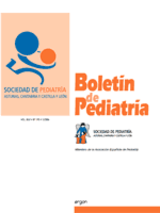Nuevas vacunas contra la tuberculosis obtenidas a partir de los avances inmunitarios y genéticos
A. Blanco Quirós
Bol. Pediatr. 2006; 46 (195): 7 - 22
Más de 2/3 de la población mundial está infectada por el M. tuberculosis (Mtb) y en 1993 la OMS declaró la tuberculosis como una emergencia mundial. La vacuna de BCG tiene una eficacia muy variable, seguramente por la interferencia de infecciones por micobacterias atípicas, además, su protección es transitoria (10-20 años) y no se puede aplicar en personas ya infectadas. Recientemente, se hicieron importantes avances en el conocimiento del genoma del Mtb, identificándose regiones delecionados (RD) durante la preparación de la BCG. También se conoce mejor la respuesta inmunitaria antituberculosa, basada en linf. Th1 y síntesis de IL-12, IL-18 e IFN?, y que tiene distintas células efectoras en la fase aguda (HLA-II y CD4+) y en la fase crónica (HLA-I y CD8+). En base a estos conocimientos, se han propuesto más de 200 nuevas vacunas, con microorganismos vivos (BCG reforzada, Mtb mutante) o con subunidades (proteínas, ADN o proteínas de fusión). Sin embargo, conseguir una vacuna que supere la BCG es una tarea difícil porque el Mtb convive con el hombre desde hace miles de años y ha conseguido establecer múltiples sistemas de escape a la respuesta inmunitaria. Abstract More than 2/3 of the world population is infected by M. tuberculosis (Mtb), and the WHO declared the tuberculosis as ?world emergency? in 1993. The efficacy of BCG vaccine is very variable; likely due to the interference with atypical mycobacteria, besides its protection is transient (10-20 y.) and the vaccine cannot be administered to infected already individuals. Recently, important advances in the genetics of Mtb were done, with the identification of genetic regions (RD), which were deleted during the BCG preparation. The immunity is also better known. The response is based on linf. Th1 and synthesis of IL-12, IL-18 and IFN?. The effector cells are different during the acute (HLA-II and CD4+) and the chronic phase (HLA-I and CD8+). In base of this knowledge more than 200 new vaccines have been proposed, with life microorganisms (reinforced BCG, mutant Mtb) or subunit vaccines (protein, DNAor fusion proteins). Nevertheless, to get a vaccine better than BCG is a difficult task because Mtb lives with humans for thousand years and it has achieved many escape systems to immune response.
\N
\N
Artículo completo (PDF) (229 kb.)
- Infectología
